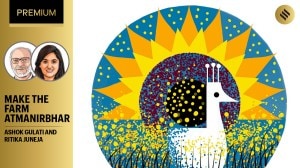Bengaluru physio had high BP of 169/100 mm Hg: How did he get it down to normal range without any medication?
Cardiologist explains why some young people can resolve certain kinds of hypertension with lifestyle correction
 38-year-old Kemil Koshy (File photo)
38-year-old Kemil Koshy (File photo)On the face of it, you would never expect someone like 38-year-old Kemil Koshy to be having high blood pressure (BP). A physiotherapist who knows about human anatomy is rarely expected to not understand his own body. A person whose blood tests indicate his basic parameters, like blood sugar, cholesterol, liver and kidney function, to be in range is not expected to be at high risk. That too a person without a family history of chronic illnesses. So the day he had a headache and had a high BP of 169/100 mmHg, this young man from Bengaluru thought the machine had malfunctioned. His next reading was 166/98 mmHg. Later readings also never went down below 160/95. He had Stage 2 hypertension.
“At first, I had a headache and some discomfort in the neck. I thought I had a muscle spasm. But somebody asked me to record my BP. I then approached a cardiologist,” says Koshy. Dr M Sudhakar Rao, interventional cardiologist at Manipal Hospital, Bengaluru, is no stranger to severe hypertension in the 35 to 40 age group. “Many think a high BP patient needs pills straightaway. Of course, medication is needed when the readings go upward of 175/110 mm Hg. Otherwise, it is important to assess the type of hypertension the patient has. Some kinds can be resolved by lifestyle correction. If the patient follows this protocol seriously and still reports high BP after a four to six-week window, then we prescribe medication,” he says. He asked Koshy to take some tests.
Why is it important to know the type of hypertension?
Hypertension is currently defined as a blood pressure reading higher than 130/80 mm/Hg. “There are two kinds, essential and secondary. The first is because of genetics and lifestyle, the second one is secondary, mostly found in young people and is reversible,” says Dr Rao.
Secondary hypertension in young people is triggered by underlying medical conditions like kidney disease, obstructive sleep apnea (when you stop breathing during sleep because of a blockage in your windpipe), narrowing of kidney arteries (which reduces blood flow and increases blood pressure) and narrowing of the main artery of the heart, which increases blood pressure, especially in the arm. Sometimes endocrine disorders, like excess production of the hormone aldosterone from the adrenal glands, lead to sodium retention and potassium loss, raising blood pressure. Excess stress hormones like cortisol and thyroid disorders can all either constrict or thicken blood vessels.
“Koshy didn’t have any of the above. And although he didn’t have a genetic history, smoke or have diabetes, he did have work stress, was grossly overweight for his height at 97 kg, followed a poor diet and didn’t sleep enough. Since other tests ruled out organ damage, a thickening of heart muscle and structure and the presence of protein in urine, we chose the lifestyle rectification route for four weeks,” says Dr Rao.
What triggered blood pressure?
Although discipline is expected of healthcare workers, they tend to have among the longest work hours. “There were back-to-back physiotherapy sessions and long work days, so I had no time to exercise myself. I had to finish seeing all my patients slotted that day to their satisfaction. That appreciation correlated with my performance and built anxieties. I would have junk food in between sessions, my breakfast and lunch were erratic, sometimes there would be brunch or lunch at 4 pm. Once I reached home between 8.30 pm and 9 pm, I would take care of my kids (aged two and six), help my wife and eat dinner anytime between 10 pm and 12 midnight. I would sleep within half-an-hour of having dinner. I would not sleep more than four to five hours as I would have to wake up early,” says Koshy. Everything was a red flag. As Dr Rao says, all of these raise blood pressure by weakening blood vessels of the heart, hardening arteries and disrupting metabolism.
 38-year-old Kemil Koshy (File photo)
38-year-old Kemil Koshy (File photo)
Did lifestyle correction have an impact?
Dr Rao put Koshy on a regime that demanded strict adherence. He asked him to maintain a daily BP chart with readings taken every morning and at night to understand a pattern of spikes. “Sometimes, we put patients on ambulatory BP monitoring, where they wear a cuff monitor that automatically measures BP at 20-30 minutes over 24 hours,” he says. Dr Rao reduced oil and salt (less than 2 g per day), added potassium rich foods like banana, cut out carbs and included more fibre-rich fruits, vegetables, lean meats, whole grains and legumes in Koshy’s diet. The doctor then added a 40-minute exercise plan of brisk walking or any aerobic activity.
“I have completely stopped eating out and I carry home food to work, be it lunch or snack boxes. I have mostly steamed or sautéed food and reduced use of oil. I cheat time from hanging around with colleagues and have my food on time. I have dinner between 8 pm and 8.30 pm as soon as I reach home. I vary my exercise routines, working out at the workplace gym, walking and jogging in the neighbourhood park. And since I am suitably tired, I sleep by 11 pm and manage a good six to seven hours of deep sleep,” says Koshy, who now weighs 90 kg. Studies have shown that a 5% to 10% weight loss can lead to a noticeable reduction in blood pressure, each kg lost reducing BP by 1 mmHg.
At the end of a month, his BP is now 135/90 mmHg. Even on the most stressful day, his systolic pressure (which is the maximum pressure exerted by the blood against the artery walls when the heart contracts) or the higher reading never goes beyond 140. “So he has been able to control his blood pressure with lifestyle correction alone. He does not need medication at this stage,” says Dr Rao.
What if diastolic pressure continues to be high?
Since young people have more stress hormones, they may have diastolic pressure (the lower reading which measures the blood pressure when the heart muscle is relaxed between beats and is directly linked to stress). “Sometimes the systolic comes down faster than the diastolic with lifestyle changes. The latter comes down more gradually,” says Dr Rao. Mindfulness practices like meditation usually lower stress. For Koshy, that has got to be unbundling himself and flowing with the energy of his kids during play hour. “I will not slacken anymore. Anything to keep off medicines as long as I can,” says Koshy.



- 01
- 02
- 03
- 04
- 05




























